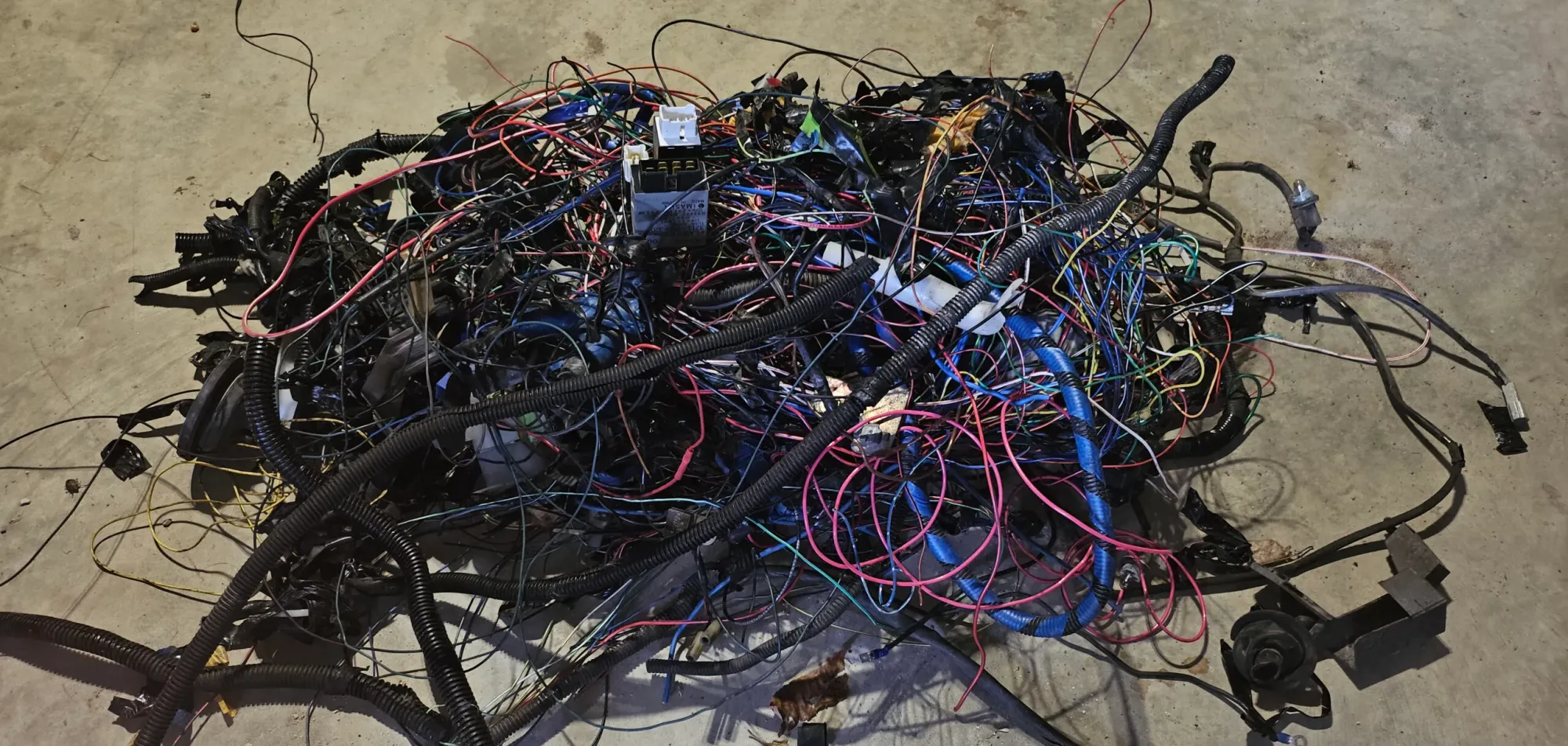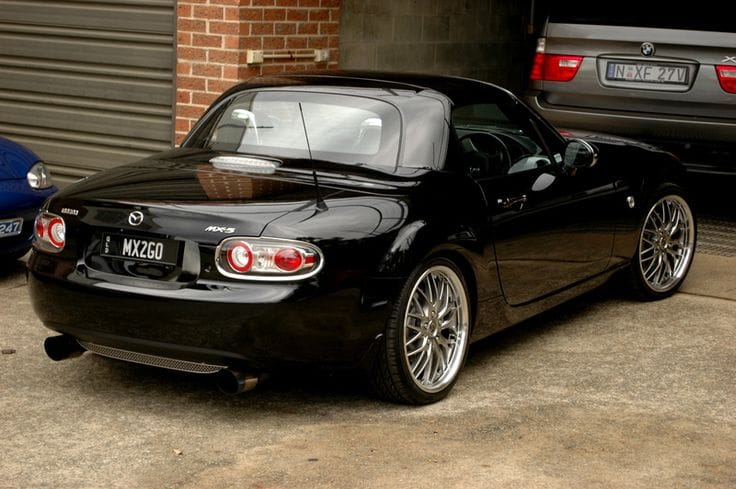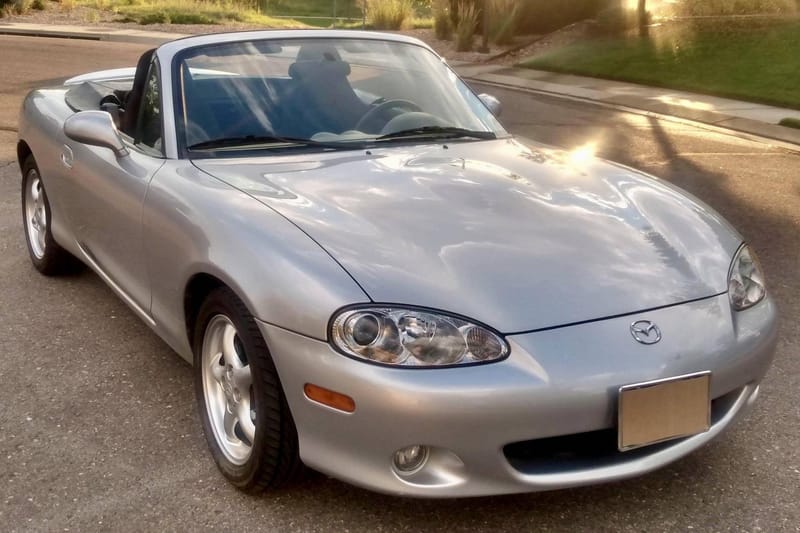Troubleshooting Common NA Miata Electrical Issues
From bad grounds to fuse box failures, minor glitches can escalate fast. Learn to spot warning signs like dim headlights or battery drains early. This guide covers common issues, real-world fixes, and preventive tips to keep your Miata running smoothly.

The NA generation Miatas are turning 36 years old this year. Of course, as they get older, these little roadsters can develop electrical bugs, everything from a simple loose battery tie-down or deteriorating ground cable to a fuse that’s gone bad. Sometimes, what begins as a minor glitch can escalate into a bigger headache, like a melted fuse box or an overcharging issue that causes battery swelling.
In this guide, we’ll walk you through the most common electrical problems you might encounter in your NA Miata and explain the usual culprits. We’ll also help you spot early warning signs, like persistently dim headlights or overnight battery drains, so you can tackle them before they become disasters. Real-world anecdotes from fellow Miata owners show how these issues come up in actual day-to-day driving. By following a systematic approach and a few preventive measures, you can nip most electrical gremlins in the bud, keep the top down, and enjoy stress-free cruising.
Battery & Charging System
Dead or Weak Battery
Batteries typically last 3–5 years, and by the time they start struggling, you’ll notice slower-than-usual cranking or flickering dashboard lights. Sometimes, a parasitic drain, like a trunk light that never shuts off or an aftermarket stereo that’s wired incorrectly, can sap the battery overnight. Corroded or loose terminals are another common culprit. To diagnose, grab a multimeter and check the voltage with the engine off; it should read around 12.2–12.6 volts. If it’s lower, try cleaning the terminals or charging the battery, then retest. If it still can’t maintain a healthy charge (above 12.0 V), it’s likely time for a new one.
Swollen or “Boiled” Battery
Overcharging is often the reason behind a battery that’s bulging, leaking acid, or giving off a sulfur smell. A faulty alternator or regulator can push too much voltage into your battery, causing it to swell and potentially vent acid in the trunk. Another possibility is a severe short that allows a massive current draw. If your battery is physically damaged or steaming, replace it immediately, clean any acid residue, and verify your alternator is providing the correct voltage. Make sure the battery is secured with the proper hold-down bracket so it doesn’t shift and short against the chassis.

Alternator & Voltage Regulator
The alternator is responsible for keeping the battery charged and running all your car’s electrical systems once the engine is on. When an alternator or its internal voltage regulator fails, you might see a battery warning light on the dash, especially if the voltage drops below around 13.5 volts under load. Conversely, if your voltage creeps above 14.5 volts, you could be overcharging, which can quickly kill a battery. Conduct simple checks at idle and again at about 3,000 RPM with a multimeter on the battery terminals. If output is erratic, or there’s any sign of over- or undercharging, you might need a rebuild or replacement. Be sure the wiring harness is in good shape, sometimes corrosion or a damaged connector will mimic a bad alternator.
Starter & Ignition Components
Starter Motor & Solenoid
If you hear a distinctive “click” when turning the key and nothing else, the starter motor or solenoid might be on its way out. Intermittent starts can also point to worn solenoid contacts, internal starter damage, or insufficient battery voltage. Confirm you have a healthy battery first (at least 12.2 volts). Then check the starter’s connections for corrosion. If you can jump-start but still get only clicks, you’ll likely need to replace the starter or refurbish the solenoid contacts.

Ignition Switch
A failing ignition switch can show up as a key that sticks, no accessory power in the “ACC” or “ON” position, or even random engine shut-offs. The internal tumblers or electrical contacts can wear out over time, and if the switch’s plastic housing is cracked, it may prevent full contact. If you suspect the ignition switch, a replacement is often the quickest and safest fix. Don’t forget to inspect the switch wiring harness for melted or broken connectors, as those can cause the same problems.
Fuses, Relays & Shorts
Main Fuse or Fuse Box Meltdowns
Blowing a main fuse is one thing, but melting it or the surrounding fuse box is a whole other level. Total power loss, no crank, no dash lights, suggests the main fuse or fuse box area might be severely overheated or damaged. This often happens if the battery’s positive terminal touches the chassis (from a loose or missing tie-down bracket). It can also happen if the alternator is pushing too much current or if a poor connection is creating localized heating without blowing the fuse right away. If you see physical melting, replace the fuse with the correct amperage and thoroughly inspect the fuse box for deformation or burnt terminals. You may need a new fuse box if the damage is extensive.

Other Fuse & Relay Problems
Less catastrophic fuse or relay failures typically show up when a single feature, like the radio, headlights, or power windows, goes on the fritz. If you find the same fuse keeps blowing, there’s likely a short or an overloaded circuit. Aftermarket amps or alarm systems are common causes of excessive current draws. Always replace fuses and relays with OEM-spec ratings, trace any suspicious wiring, and repair as needed.
Grounds & Wiring Harness
Ground Points
A bad ground can trigger a surprising range of odd behaviors: gauges flickering, random warning lights, headlights dimming when you switch on another accessory, and more. Rust, paint, or corrosion at ground contact points often leads to increased resistance. Inspect and clean ground points around the battery, firewall, and engine bay by sanding down to bare metal. Use a star washer or similar hardware to ensure a solid connection, and verify near-zero ohms of resistance with a multimeter.
Wiring Harness & Connector Damage
Even after installing a fresh battery or alternator, you can run into persistent charging or overcharging issues if the wiring harness itself is compromised. Brittle insulation, frayed wires, or corroded connectors can be found in older Miatas, especially around high-heat areas or where water might intrude. If you spot widespread damage, like multiple melted or corroded wires, it may be more efficient to replace the entire harness rather than patch it. In smaller cases, continuity checks and careful repairs with heat-shrink and proper splices can do the job.

Lights, Switches, & Accessories
Headlights (Dim or Flickering)
If your headlights dim at idle, flicker, or blow out more frequently than they should, check your charging system first to ensure it’s putting out the right voltage. Corrosion at the headlight socket or a failing relay can also cause flickering or reduced brightness. Replacing old bulbs, cleaning connectors, and, if necessary, swapping the headlight switch or relay often clears this up.
Power Windows & Door Locks
Sluggish or non-functional windows can be due to a worn window regulator or misalignment in the tracks. If you press the switch and hear the motor whirring but the window doesn’t move, the regulator mechanics could be jammed or off-track. For door locks, you might have a burnt-out actuator or a dirty switch. Always start by checking the appropriate fuse or relay. If everything checks out, test both driver-side and passenger-side switches to isolate where the fault lies.
Diagnosing Electrical Shorts
Repeatedly blown fuses, burning smells, or rapid battery drain often point to a short somewhere. Shorts occur when a live wire comes into contact with ground or another wire, causing a big current spike. You might also notice random resetting of electronics or flickering lights.
First, visually inspect areas where wires pass through metal openings or rub against brackets. Next, pull one fuse at a time to see which circuit is drawing excessive current. A multimeter’s continuity function can help you find a short by revealing very low resistance to ground. If you can’t pinpoint the issue and components keep getting fried, consult a professional auto electrician who has the specialized tools and experience to track down the toughest electrical gremlins.
Preventive Maintenance & Best Practices
One of the most important things you can do for an NA Miata is to keep the battery secured. A wiggly battery can short out and cause major damage before you even realize something’s wrong. Regularly inspect and clean ground points, especially if you live in areas with high humidity or salted roads. Invest in good-quality aftermarket or OEM parts, cheap replacement alternators and flimsy fuses tend to fail quickly or create more issues.
Keep a simple voltmeter or occasionally check battery and alternator output with a multimeter, so you can catch undercharging or overcharging before it damages anything. Stash some spare fuses in your glove box and periodically check your fuse box for signs of overheating. Lastly, whenever you open up panels or remove the dashboard, take a peek at the wiring harness, re-secure any dangling connectors and look for cracked insulation or corroded terminals.
When to Seek Professional Help
Sometimes, despite your best efforts, a problem refuses to go away. If you’ve replaced the battery and alternator multiple times, only to keep boiling batteries or blowing fuses, you might have a deeper issue with the wiring harness or ECU. Major harness damage, like melted sections or advanced corrosion, usually calls for an expert, too. And when it comes to safety-critical circuits (headlights, ABS, airbag systems), it’s safer to have a trained technician ensure everything is working properly.
Owning an older NA Miata often means dealing with the occasional worn wire or dodgy ground point, but the good news is that these cars are relatively simple to troubleshoot if you approach them methodically. By regularly checking your battery tie-downs, keeping grounds clean, staying on top of alternator output, and respecting fuse ratings, you can avoid most of the major pitfalls, like melted fuse boxes, constant no-start scenarios, or alternators that keep frying.
A few key things to remember: always secure the battery and keep the terminals corrosion-free. Keep an eye on your alternator’s voltage output; if it drifts outside of 13.5–14.5 volts, investigate. If a main fuse melts rather than blowing cleanly, that’s typically a sign of a more serious short or poor connection. And if you’re dealing with brittle or seriously compromised wiring, a harness replacement might be your best bet.
With sensible maintenance and good parts, your NA Miata’s electrical system should stay as spirited and reliable as its chassis, allowing you to enjoy plenty of sun-filled, top-down miles without the dread of looming electrical malfunctions.




